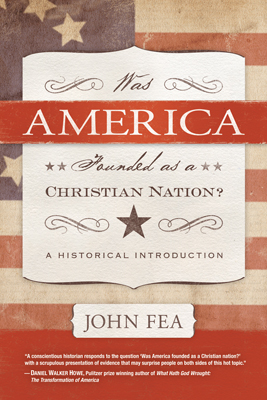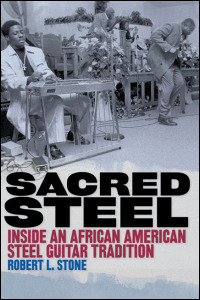Paul Harvey
Today we continue our interview with David Sehat, author of
The Myth of American Religious Freedom.
PH: A good portion of your book is taken up with dissenters -- the abolitionists, Elizabeth Cady Stanton, Mormons, freethinkers, and progressive intellectuals in the twentieth century. Time after time, they get beaten down by the moral establishment, yet in the end they more or less triumphed in crafting a new definition of religious freedom. Can you give us briefly one example of how you use dissenters in your book, and how they confronted and, over time, whittled away at the foundations of the moral establishment?
DS: Of all the people I talk about, my favorite is Elizabeth Cady Stanton. As most of your readers know, Stanton was a radical women’s rights activist who argued that the subservient place of women in law grew out of a Christian patriarchy. To make way for the emancipation of women, Stanton was relentless in her criticism of the connection of Christianity to law. According to her opponents, women’s liberation would entail societal degradation, because treating a woman as an individual before the law would undermine the institution of the family, the mechanism for inculcating morals in society. As a result, Christian proponents of the moral establishment placed the obligations of society over the desires of individual women such as Stanton. By contrast, Stanton placed the individual above society. She argued that laws too often required that the individual—especially the female individual—to be “sacrificed to the highest good of society,” which was the fundamental error of the moral establishment. She claimed instead that a society could not suppress the individual and still uphold the highest social good. Only when individuals possessed full freedom would the possibilities of a society be realized.
Stanton laid out the basic question in the debate, which was: which is most basic, the society or the individual? This claim about the importance of the individual and of individual rights in a liberal, democratic society circulated among the many dissenters to the moral establishment in the nineteenth century. But the notion did not finally triumph until the twentieth century, through progressive intellectuals, such as Herbert Croly and Walter Lippmann, and liberal legal theorists, such as Louis Brandeis, who used the Court to enforce individual rights.
PH: You hit liberal justices pretty hard for misusing history, particularly in claiming a strict separationist position on the First Amendment that basically never really existed. In other words, since the "wall of separation" is basically a historical myth, it is a bad idea to use that myth in reasoning in legal cases. How do you think those on the center/left of the spectrum should view your history of the moral establishment in making arguments favorable to their position? Is this akin to Brown v. Board –acknowledge crimes against freedom committed in the past, including by the Court, and just say we need a completely different model than that?
DS: Yes, that’s exactly right. Using bad history does not help public debate and it does not make stable law. Liberals should acknowledge that the past did not feature a harmonious arrangement of freedom that sprang from the minds of Jefferson and Madison. By reframing their arguments away from that bad history, I actually think liberals would strengthen their own position because the most powerful argument for liberal jurisprudence is historical. It goes something like this: Once upon a time, the individual was subject to religious oppression that used the apparatus of the state. But then the Supreme Court realized that the Bill of Rights, which defines the rights of American citizens, should apply to the states because the states were infringing upon the rights of the individual guaranteed by the Fourteenth Amendment. As the Supreme Court began applying the Bill of Rights to the states, it made a host of questionable historical arguments. But it did so for a still legitimate purpose that is now under attack by religious partisans in the present. The Court sought to free the individual from oppression in order to make the United States into a liberal democracy. We can uphold those rulings while not repeating the same bad history, because acknowledging past Protestant power helps to show why the liberal jurisprudence is necessary.
PH: The latter portion of the book deals with some more contemporary controversies and decisions, and you suggest very strongly that the Roberts Court, when it has the chance, will "continue to aid political conservatives and religious activists in rehabilitating the moral establishment." This is a different argument than I have seen from some other legal scholars, who have suggested that recently the Supreme Court has moved more towards a position of shying away from big religion decisions, because First Amendment law as to what is or is not a "religion" has just become a huge mess of contradictory decisions (as in the one a few years ago allowing for the use of a religious symbol in a public place in one state, but disallowing it in another state). In what ways do you foresee a possibly more activist court under Roberts, and why would it be interested in rehabilitating a moral establishment that has led to so much dissent and conflict over two centuries, as you trace in your book?
DS: It depends upon what you mean by “big religion decisions.” I agree that the Court seems chastened by the daunting (if not impossible) theoretical task of defining religion in a way that is fair and stable and does not violate the establishment clause. But I don’t think that this strongly conservative Court is going to calmly accept past liberal jurisprudence. Part of my argument is precisely that a case doesn’t have to be about “religion” per se to uphold religious power.
Consider two cases. The Court currently has a case before it that involves an Arizona law which funnels money to private religious schools through a complicated tax credit system. I find this an instructive case. In the nineteenth century, Protestants controlled the schools but they lost that control in the mid-twentieth century as the Supreme Court forbade prayer and Bible-reading in schools. When the Supreme Court dismantled religious control over schools, religious conservatives began to advocate the use of public money in private schools. The Arizona law is in that tradition of seeking an end-run around mid-twentieth-century legal decisions. The state claims that the money given to private, often sectarian schools is not public money because an individual donates the money to a school and is then reimbursed by the state through a tax credit (not a tax deduction) on a matching basis up to a certain amount. As a result, Arizona claims, it cannot be considered a violation of the establishment clause. This sounds like money laundering to me, and I would like to think that the Court would strike it down. But the last thirty years has seen the Court ever more comfortable in providing public money to private schools, even private sectarian schools. If the Court upholds the Arizona law, it would be in keeping with the general jurisprudential trend of rehabilitating Christian schools through the use of public money.
The second case that bears watching is the California gay marriage case, which is going to wind up in the U.S. Supreme Court. The Court has been amenable in the recent past to the notion that the law cannot be used to advance private moral norms. In Lawrence v. Texas in 2002, Justice Kennedy used that argument to strike down all anti-sodomy laws in the United States. Moreover, in 1967 when the Court struck down miscegenation laws, it ruled, “The freedom to marry has long been recognized as one of the most vital personal rights essential to the orderly pursuit of happiness by free men.” Putting these two opinions together might suggest that the Court will uphold gay marriage, but it is not at all clear. As usual, the decision seems likely to boil down to Kennedy’s position. He wrote the opinion striking down sodomy law but did not give any indication of his stance on gay marriage. If I had to read the tea leaves (always a dangerous practice), I’m not optimistic that the Court will rule in favor of gay rights because I don’t think it likely that Kennedy will use the same kind of argument that he made in Lawrence. I hope I’m wrong, but should the Court strike down gay marriage, the ruling would, once again, serve as an extension of religious power.
PH: Getting to the bottom line: in 3 or 4 sentences, can you tell us what is the single most important takeaway point you want people to get from your book?
DS: I think it is time that we stopped celebrating ourselves. And by “we” I mean both liberals and conservatives. This nationalist self-celebration has generated a debate on religion in public life whose most notable feature is a pervading sense of falsity. By looking squarely at the religious coercions of the past and the multiple limits of religious freedom, I’m hoping that we can have a new conversation—both a more honest conversation and a more productive one—on a better historical foundation.
Thanks for the stimulating questions, Paul, and thanks again for reading the book.
 Paul Harvey
Paul Harvey



 ames of Chuck Campbell, Calvin Cooke, Little Willie Eason, Lorenzo Harrison, Glenn Renard Lee, Henry Randolph Nelson, or Robert Randolph. All these musicians were affiliated with music of the indigenous black American Holiness Pentecostal churches, music in which the steel ("Hawaiian") guitar plays an important role. Arcane though this information might seem, Stone (an independent folklorist) shows its importance both in its own right and in its relation to other musical and spiritual aspects of African American culture. This is a tale of personal discovery, a path that started in Florida two decades ago but broadened to California, Canada, Jamaica, Haiti, and the Bahamas as Stone investigated the liturgy and practices of the denomination and specific congregations. The photographs, videography, extensive bibliography, lengthy discography, and register of more 100 interview sessions reveal the implications of this music for those interested in African American culture (musical and religious) and folk and popular music traditions.Summing Up: Recommended. Upper-division undergraduates through faculty.
ames of Chuck Campbell, Calvin Cooke, Little Willie Eason, Lorenzo Harrison, Glenn Renard Lee, Henry Randolph Nelson, or Robert Randolph. All these musicians were affiliated with music of the indigenous black American Holiness Pentecostal churches, music in which the steel ("Hawaiian") guitar plays an important role. Arcane though this information might seem, Stone (an independent folklorist) shows its importance both in its own right and in its relation to other musical and spiritual aspects of African American culture. This is a tale of personal discovery, a path that started in Florida two decades ago but broadened to California, Canada, Jamaica, Haiti, and the Bahamas as Stone investigated the liturgy and practices of the denomination and specific congregations. The photographs, videography, extensive bibliography, lengthy discography, and register of more 100 interview sessions reveal the implications of this music for those interested in African American culture (musical and religious) and folk and popular music traditions.Summing Up: Recommended. Upper-division undergraduates through faculty.








